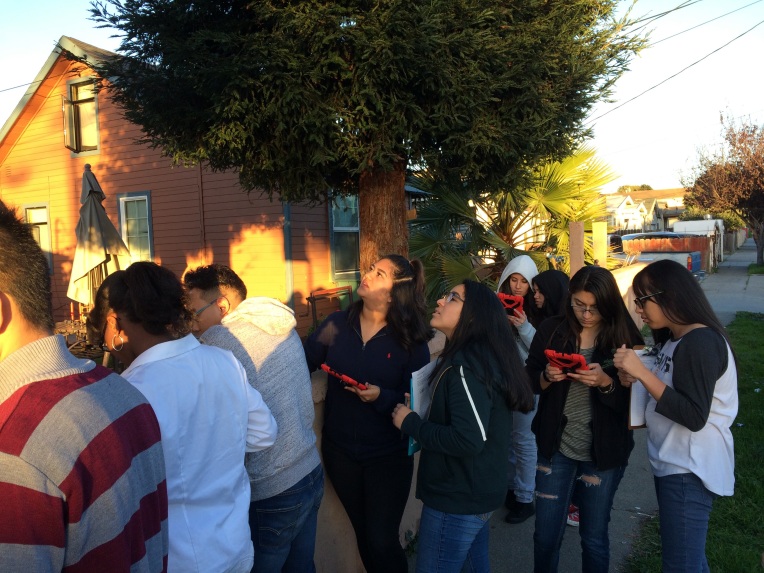
In groups of two, the Urban Forestry Interns set out in the neighborhood around their school campus to compete against each other in identifying tree species. The Interns have been learning about different tree species, and each gave a presentation to their teammates a few weeks back. With some knowledge of local tree species and strategies for discerning the differences among trees, the competition was competitive. The Interns also made use of dichotomous tree keys and internet searches to make identifications.
The winning team, with a perfect score, correctly identified all the tree species including bonus points for providing the botanical and common name of the trees.
“One way to help identify the tree is by looking at their leaves and bark.” – Jessica C.
“One way to help identify the trees are if they [the branches] where alternate or opposite.” – Lizet M.





